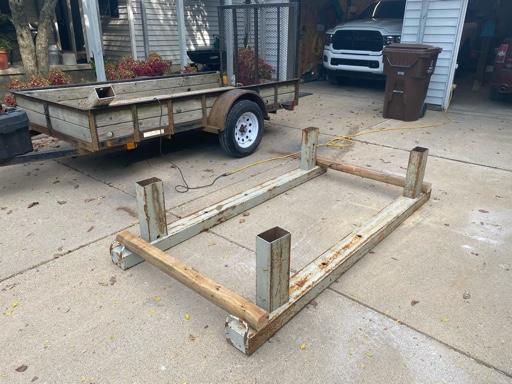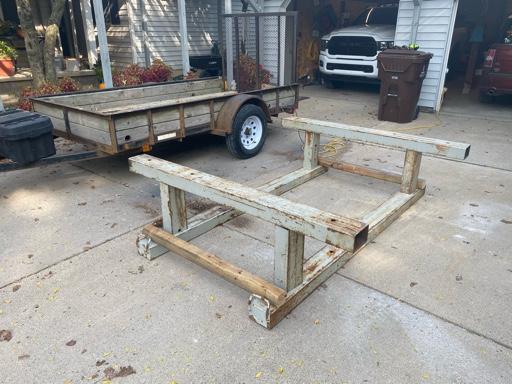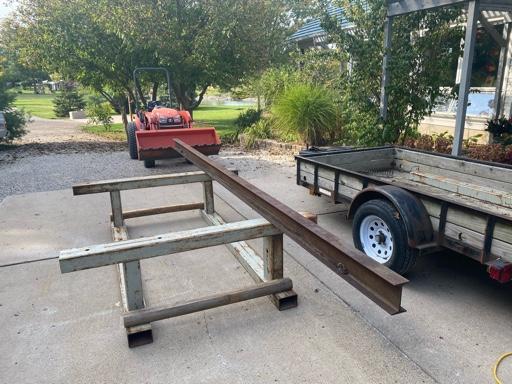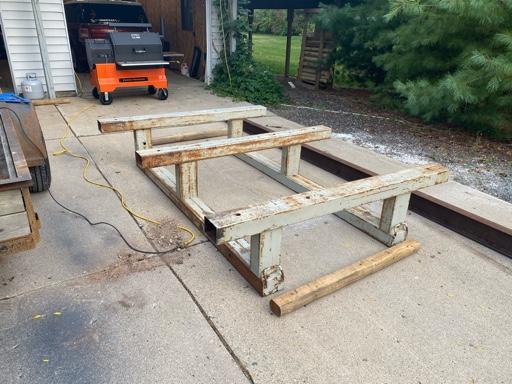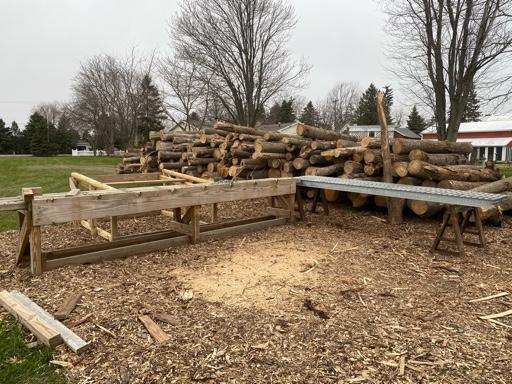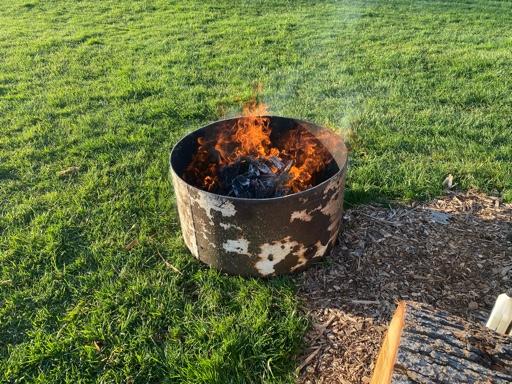I feel like I'm hijacking Casey's thread.
Yes, that's how I do it.
The SuperSplit runs, as does the conveyor.
Start the saw and cut two logs, one each side of the splitter.
Split six rounds on one side, and roll another log against the front stop. The peavey is upright at the end of the cutting table, and used to push or pull a log to the end stop using the holes drilled in the bench.
Once positioned, I split the opposite side of six rounds and position another log.
The nursery wagon is used as a tool cart and bench for the saw when cutting so I am not setting the saw on the ground or on the log deck itself. It is also convenient to either cutting bench and out of the way when loading the log decks.
Start saw on nursery wagon, and cut two logs and shut the saw off.
(Any junk when splitting gets tossed in the plastic row- pack or crate. When the four crates I have are full, the junk wood, shorts and punky stuff, is hand loaded onto the conveyor and bundled on a pallet. We burn the junk in an out building.)








Chips build up quickly and need mucked out about every cord, or for me four pallets with the PackFix. Bark is dealt with as it builds up. I think I said I have to move the log decks for log deliveries to get the truck out, which is two or three times a year, and cleaning up around them as needed.
If noodling, the splitter gets shut off.
Edit: These are photos from earlier this spring. The log pile sat for nine months or so before I got to this truckload. That is why the bark is peeling off so much. Normally, little bark comes off when processing. This made for a lot of extra cleanup, but the barkless firewood customers love as it is much cleaner for them. It also seasons nicely, and probably quicker.
